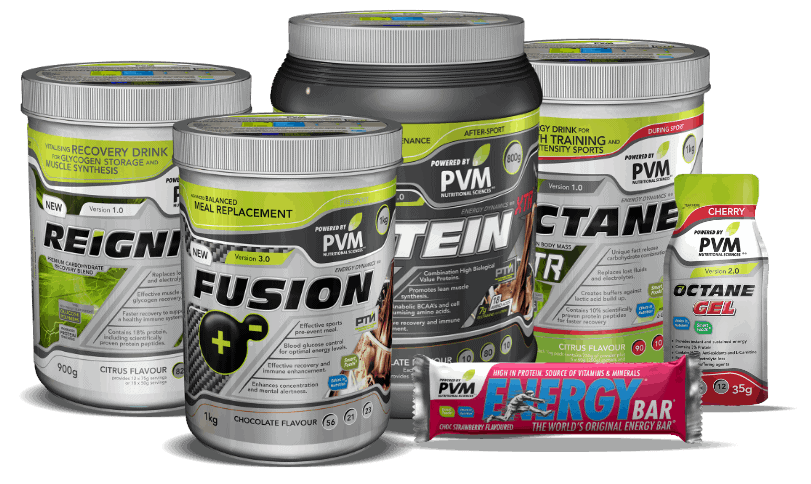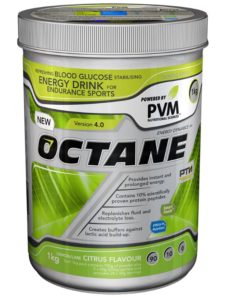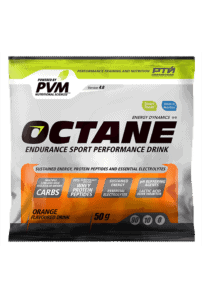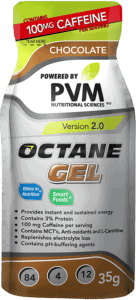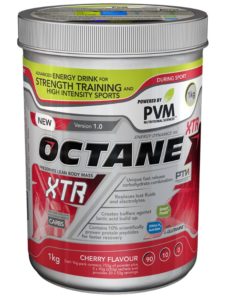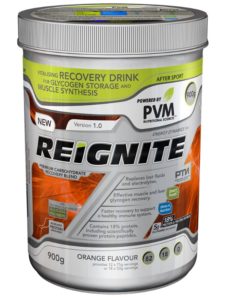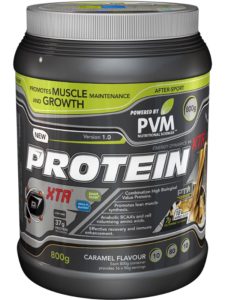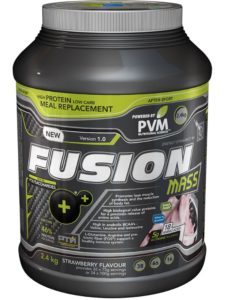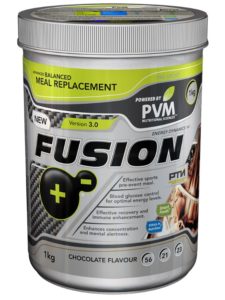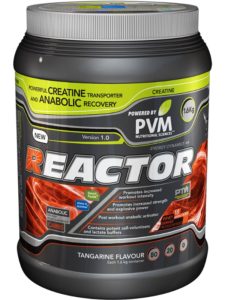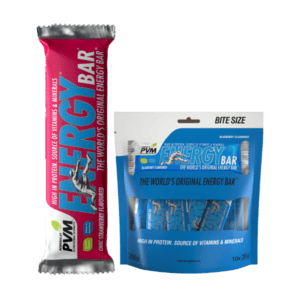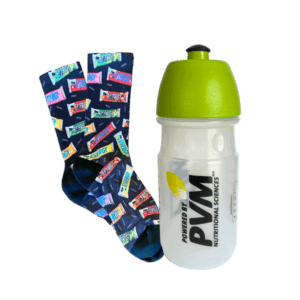Energy is metabolised from three macronutrients namely, carbohydrates, fats, and protein. During exercise, the macronutrients provide energy simultaneously via the aerobic (carbohydrates and fat) and anaerobic (carbohydrates only) systems. However, the degree to which fats and carbohydrates are metabolised for energy is dependent on the intensity and duration of the training session. Fat is the preferred energy source during low-intensity, longer-lasting activities, and carbohydrates, especially stored glycogen, sustain high-intensity phases like hill climbs or sprint efforts.
A well-trained athlete can burn fat at a higher rate, but only focusing on fat oxidation leads to a significant decrease in performance, as a result of the detrimental impact on the carbohydrate metabolism. The body can only store limited amounts of carbohydrates; therefore, physically active individuals are advised to use carbohydrates during training. The benefits of using carbohydrates during training include:
- Prolonged time to fatigue
- Improves mental alertness
- Prolonged high-intensity output
- Glycogen (body’s carbohydrate stores) sparing effect
- Carbohydrates help with fluid and electrolyte absorption
- Faster recovery time post-training
Guidelines for carbohydrate intake during endurance exercise
Recommendations for carbohydrate intake during training are expressed in grams per hour and depend on the duration and intensity of the activity. It’s not expressed per unit of body mass (kg).
Athletes undergoing prolonged bouts (2–3 h) of training can oxidize carbohydrates at a rate of 1–1.1 g/min or about 60 g/hour (1). However, different types of carbohydrates can be oxidized at different rates in skeletal muscle due to the involvement of different transporter proteins that result in carbohydrate uptake.
The use of multiple transportable carbohydrates, thus, combinations of glucose and sucrose or maltodextrin and fructose have been reported to promote greater exogenous rates of carbohydrate oxidation (up to 1.5 g/min or 90 g/h) when compared to single sources of carbohydrates (2,3,4,5 & 6).
Table 1 below gives an overview of the recommended hourly carbohydrate intake depending on the duration of your training session. Importantly, these amounts of carbohydrates should be consumed from the first hour of training/competing.
| DURATION OF TRAINING | < 1 HOUR | 1 - 2 HOURS | 2 - 3 HOURS | > 3 HOURS |
|---|---|---|---|---|
|
Recommended Hourly Carbohydrate Intake |
Use only water Notably small amounts of carbohydrates can still be beneficial for high-intensity training sessions. |
30 g/hour | 30 - 60 g/hour | 60-90 g/hour |
|
Type of carbohydrates |
Single-source carbohydrates can be used (i.e. glucose only) | Single-source carbohydrates can be used (i.e. glucose only) | Single-source carbohydrates can be used (i.e. glucose only) | Multiple transportable carbohydrates are recommended (i.e. glucose and fructose) |
Carbohydrate sources can be mixed and matched to meet the recommended hourly intake. Table 2 below summarises the combination of PVM products you can use.
| CARBOHYDRATE GOAL | PVM PRODUCTS |
|---|---|
| ± 30 g/hour |
|
| ± 30 - 60 g/hour |
|
| ± 60 – 90 g/hour |
|
*Use 5 level scoops (50 g) Octane/Octane XTR with 500 ml water for an isotonic mix.
**Use 5 level scoops (50 g) Octane/Octane XTR with 600 ml water for a hypotonic mix.
Hypo- or isotonic refers to osmolality. Osmolality can be defined as the number of particles dissolved in water. Optimal absorption of fluids within the body is best when the solution equals the osmolality of interstitial fluids. Hypertonic solutions attract water into the gastrointestinal tract and may cause diarrhoea
Guidelines to start training with carbohydrates
- Start slow and take the time to train your gut. Gastrointestinal (GI) problems (bloating, abdominal pain, nausea, vomiting, and diarrhoea) are common amongst endurance athletes and range from mild to severe. These symptoms might occur as a result of the intestine that is not adapted to absorb nutrients well under stress or decreased blood flow due to prolonged exercise. Training the gut could potentially help with the development of gut adaptations that improve the delivery of nutrients (especially carbohydrates), and reduce the prevalence or severity of GI symptoms during exercise.
- Focus on enough fluid intake with your carbohydrates to decrease your risk of GI problems. There are various factors that influence hydration in athletes, making it impossible to prescribe fluid guidelines that will meet the needs of all athletes. The general recommendation is to drink according to thirst.
- Work towards your race day plan (specific hourly carbohydrates goal). Choose high-intensity sessions to train your race day plan.
- Ensure you add enough carbohydrates to your meals, especially as you are getting closer to race day. increasing your habitual carbohydrate intake increases your ability to absorb carbohydrates (oxidation rate).
- Periodise your nutrition. Train with low carbohydrate intake during specific training sessions to improve fat oxidation. These should ideally be during low-intensity, longer training sessions.
Please note that these are only approximate guidelines. For a more individualised diet plan (taking training intensity, goals, habitual diet, etc. into account) or any other nutritional inquiries, please contact our Registered Dietitian for assistance.
REFERENCES
- Cermak, N.M. and van Loon, L.J., 2013. The use of carbohydrates during exercise as an ergogenic aid. Sports Medicine, 43, pp.1139-1155.
- Currell, K. and Jeukendrup, A., 2008. Superior endurance performance with ingestion of multiple transportable carbohydrates. Medicine+ Science in Sports+ Exercise, 40(2), p.275.
- Earnest, C.P., Lancaster, S.L., Rasmussen, C.J., Kerksick, C.M., Lucia, A., Greenwood, M.C., Almada, A.L., Cowan, P.A. and Kreider, R.B., 2004. Low vs. high glycaemic index carbohydrate gel ingestion during simulated 64-km cycling time trial performance. The Journal of Strength & Conditioning Research, 18(3), pp.466-472.
- Venables, M.C., Brouns, F. and Jeukendrup, A.E., 2008. Oxidation of maltose and trehalose during prolonged moderate-intensity exercise. Med Sci Sports Exerc, 40(9), pp.1653-9.
- Jentjens, R.L.P.G. and Jeukendrup, A., 2003. Effects of pre-exercise ingestion of trehalose, galactose and glucose on subsequent metabolism and cycling performance. European Journal of Applied Physiology, 88, pp.459-465.
